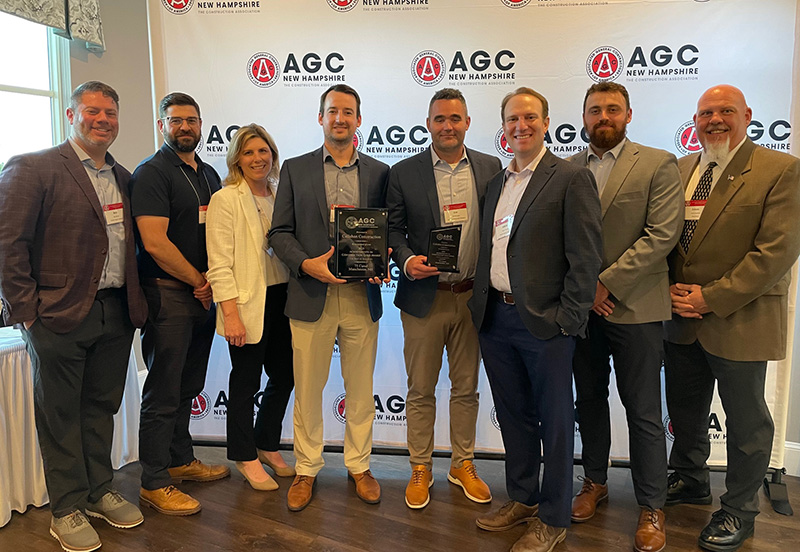News: Construction Design & Engineering
Posted: September 18, 2007
"Making a wish and checking it twice"
When was the last time you updated your media list? What do you mean, "What's a media list?" You don't have one? Other than your data base of clients and prospects, there's probably not a more important resource in your business development arsenal.
For the uninitiated, a media list is an up-to-date register of the names, addresses and contact people at all the publications, radio and television stations in your market area. (By publications, I mean daily and weekly newspapers, business journals, trade magazines, industry association newsletters and the like.) Without a complete and current media list, you're not taking full advantage of the public relations opportunities available to you and your company. Don't underestimate the promotional value that can be gained through many of these avenues, even the less obvious ones.
Putting together a media list isn't difficult; it simply requires a bit of legwork. Let's take the categories one at a time.
* Newspapers (dailies and weeklies)- Your local library's reference section, in all likelihood, carries some type of media directory. Among those most popular with PR professionals are Bacon's and Burrelle's Media Directory. Beware that what you find may be an older edition. But even if it's the latest issue, call each publication to confirm their address and in particular, the contact name (which in your case is probably the business or real estate editor). Why? Editors are highly mobile, often changing jobs.
* Business journals, trade magazines and industry newsletters- You're probably already familiar with many of these; for example, The Boston Business Journal, New Hampshire Business Review, Vermont Business, and, of course, the New England Real Estate Journal. Every industry has as least a couple of trade magazines and most industry associations publish their own newsletters. Several of the directories listed above also carry listings for business and trade publications. Follow the same steps, making sure to verify the accuracy of the information.
Don't eliminate national publications; they need news, too, and often are happy to run your press releases. (Don't exclude, either, trade magazines in industries where you may have an overlapping interest; i.e., if you're a contractor who does a lot of healthcare work, make sure publications like New England Healthcare Review are included on your list.)
* Radio and television- These folks should be on your media list also. Though more difficult to gain coverage from, it's still a good idea to include them in your mailings. News directors will eventually become familiar with you and your company, so when they're looking for someone to speak with about an industry-related story, you just might be the one they turn to. You'll find TV and radio media directories in the library also, however it's often as simple as looking in the TV Guide or local newspaper's program listings to find the station addresses. Once you identified them, just call and ask for name of the news director.
Once you've compiled your media list, put it on your computer in a way that a) allows you make changes easily, and b) permits you to print out labels for all those on your list. Every six months or so, have someone in your office call each publication and verify the contact person; mail directed to someone who's no longer in the position labels you as either sloppy or an amateur—or both.
Now that you've got this wonderful list up and running, what do you do with it? Just in case you haven't figured that out yet, the answer is—you send them stuff! What stuff? I recommend sending not only press releases, but newsletters, quarterly reports (if you're a public company), new promotional literature when it comes out, and anything else that helps create visibility and exposure for your company in a professional (though not gushingly promotional) manner.
Lastly, always remember these two important axioms:
1) The media needs your information every bit as much you want them to have it.
2) God helps those who hype themselves.
David Wood is a-copywriter, newsletter publisher and marketing consultant specializing in the construction industry, Deering, N.H.
MORE FROM Construction Design & Engineering
Nobis Group awards Robinson and Moreira STEM scholarships
Concord, NH Nobis Group, a 100% employee-owned consulting firm specializing in engineering and environmental solutions across the Northeast, has named the recipients of its 2025 STEM Scholarship: Andie Moreira of

Quick Hits
Columns and Thought Leadership

Ask the Electrician: Is summer a prime time for commercial electrical maintenance?
The answer is “Yes!” While January marks the official new year, many businesses view September as a fresh start. This makes summer an ideal time for commercial property owners to schedule long-term electrical maintenance projects.

The design-build advantage: Integrated interior design solutions - by Parker Snyder
When it comes to corporate interior spaces for both commercial and industrial projects, partnering with a design-build firm with in-house interior design services can offer clients many benefits. Unlike traditional delivery methods where interior designers operate independently from the design and construction teams, often creating a longer project timeline as cost negotiations and revisions ensue

Careers in Construction Month focus on training and safety - by Joe Camilo
October is Careers in Construction Month, and rarely has it been more consequential. According to our chapter’s national parent organization, the construction industry needs to attract half-a-million new workers in the coming year to meet demand. Addressing that need is a huge job, but we at ABC MA are trying to do our part.

The rise of incubators and co-working spaces: The latest in life sciences - by Matt Combs
In recent years, the life science industry has witnessed a shift in how companies operate and innovate. One of the key driving forces behind this transformation is the emergence of incubators and co-working spaces specifically tailored to meet the unique budget and schedule needs of startups.







